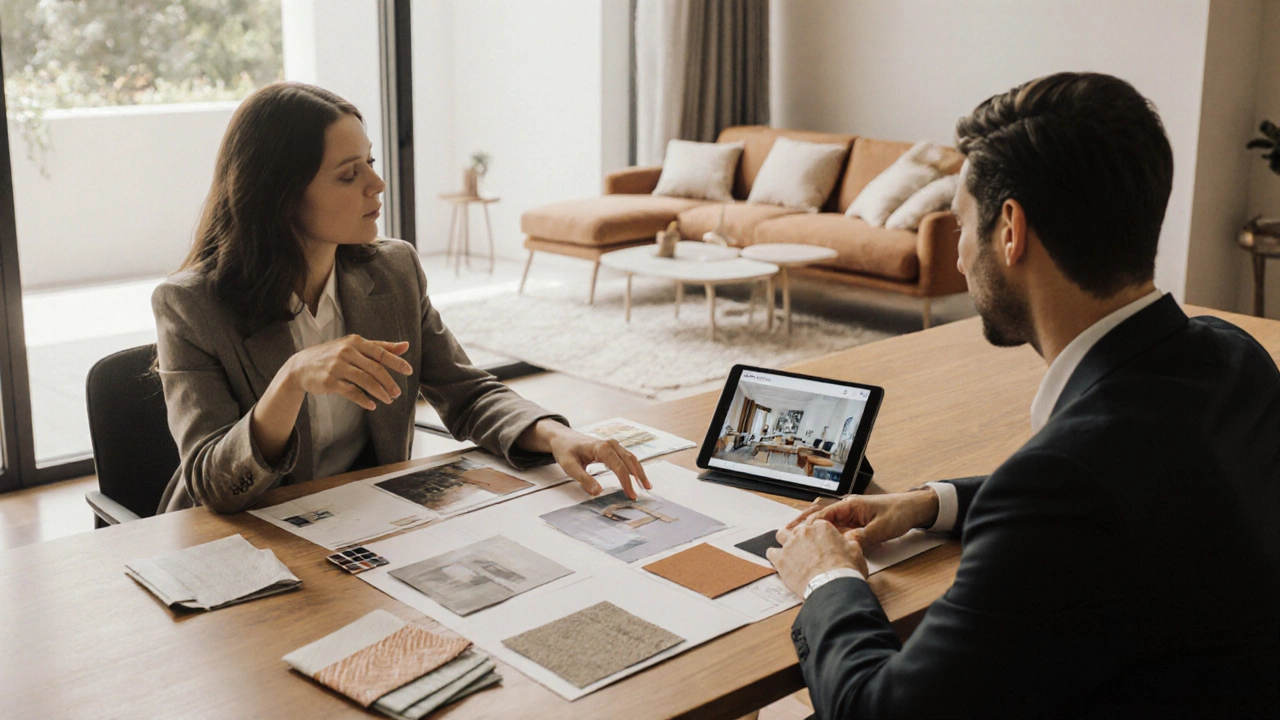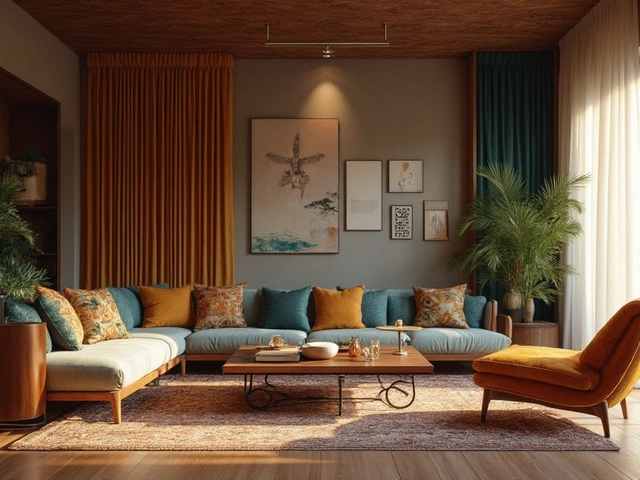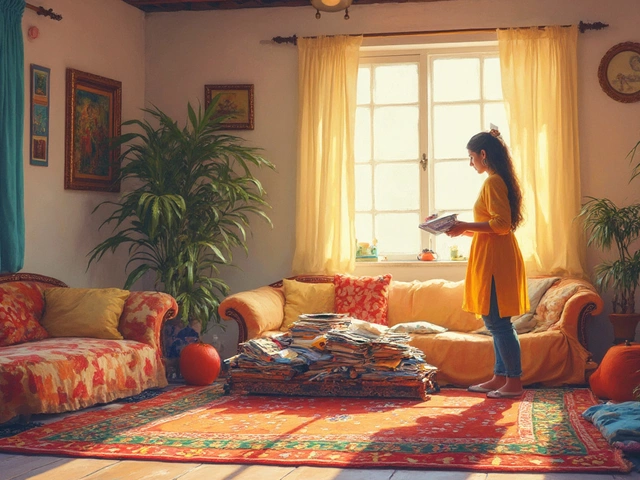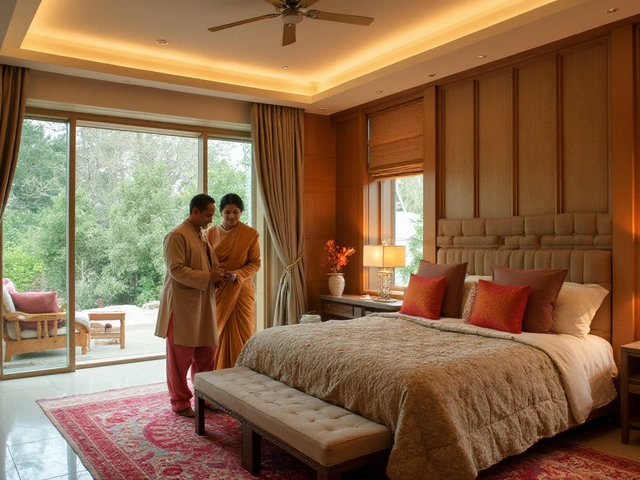Interior Designer is a professional who shapes the look, feel and functionality of indoor spaces. They translate a client’s lifestyle, budget and brand into cohesive rooms that work well and look great.
interior designer is more than a shopping assistant - they orchestrate everything from layout to lighting, ensuring the final space meets both aesthetic and practical goals.
Quick Takeaways
- They handle space planning, material selection, colour schemes and lighting.
- Project management and budgeting are core parts of the job.
- Collaboration with architects, contractors and vendors keeps the project on track.
- Hiring a designer saves time, avoids costly mistakes and adds resale value.
- Modern designers use 3D software and focus on sustainability.
Who Does an Interior Designer Work For?
Client is the person or organization commissioning the design. Clients range from homeowners and renters to business owners and developers who need a tailored environment. Understanding a client’s habits, preferences and budget is the starting point for every project.
The Core Responsibilities
Every interior design project can be broken down into a handful of recurring tasks:
- Discovery & Briefing: Meet the client, discuss goals, collect measurements, and set a realistic budget.
- Concept Development: Create mood boards, choose a Color Scheme a palette of primary, secondary and accent colours that unify the space. and sketch initial layouts.
- Space Planning: Use Space Planning the process of arranging furniture, fixtures and circulation paths to maximise usability. tools like CAD or BIM to produce floor plans.
- Material & Finish Selection: Choose flooring, wall coverings, fabrics, and hardware that meet durability, aesthetics and budget requirements.
- Lighting Design: Develop a lighting plan that blends ambient, task and accent lighting. Lighting Design helps set mood, highlight features and improve energy efficiency.
- Project Management: Coordinate contractors, order orders, track timelines and keep the budget in check. Project Management covers scheduling, procurement, site visits and quality control.
- Installation & Styling: Oversee the delivery and placement of furniture, accessories and art pieces, then fine‑tune the final look.
- Post‑Project Review: Walk through the finished space with the client, address any punch‑list items, and gather feedback for future work.
Key Skills and Tools
Successful designers blend creativity with a practical toolkit:
- CAD Software Programs like AutoCAD, SketchUp or Revit that produce accurate 2D/3D drawings.
- Strong communication - translating design jargon into layperson language.
- Budgeting - balancing cost with quality, often using spreadsheets or specialized estimating software.
- Knowledge of building codes and accessibility standards.
- Awareness of sustainable materials and energy‑saving strategies. Sustainability focuses on low‑impact fabrics, reclaimed wood and LED lighting.
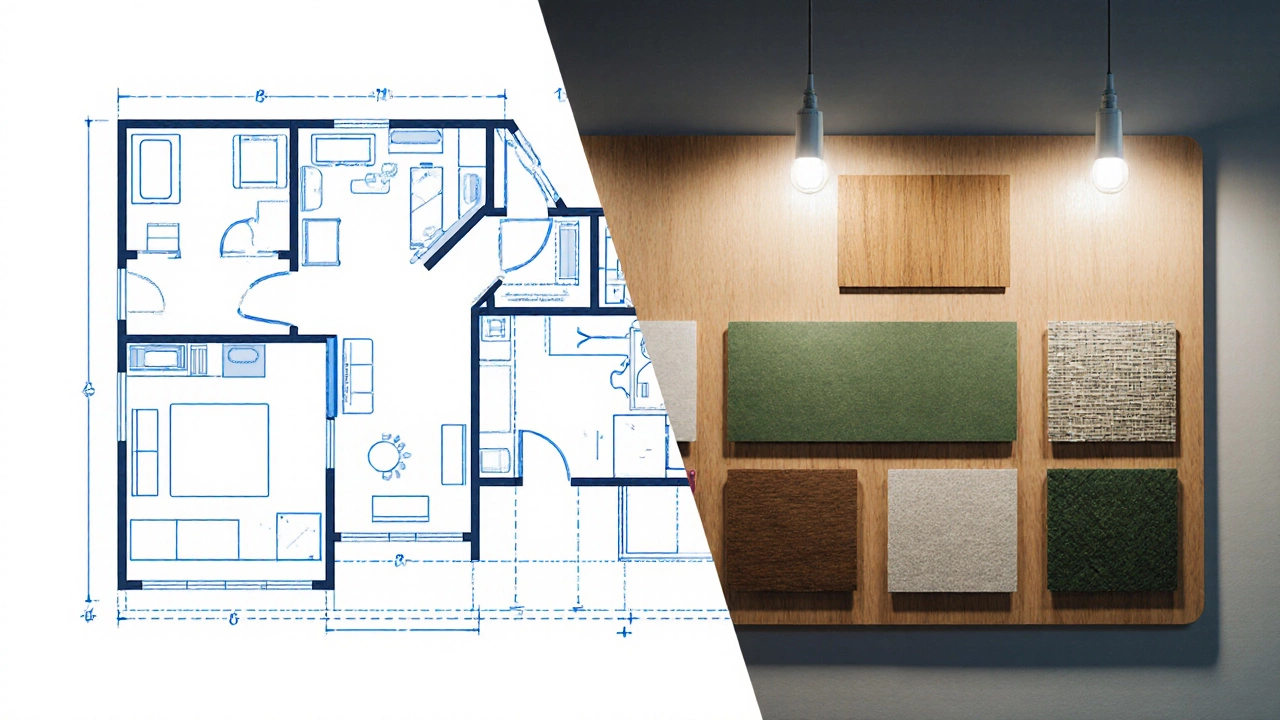
When to Hire an Interior Designer
Not every makeover needs a professional, but there are clear signals that it’s worth the investment:
- Complex layouts - loft conversions, multi‑room renovations or mixed‑use spaces.
- Time constraints - you need the project finished on schedule.
- Budget uncertainty - a designer can prevent overspend by sourcing cost‑effective solutions.
- Desire for a cohesive brand - especially for commercial spaces.
- Special requirements - acoustic treatments, accessibility compliance, or high‑performance sustainability goals.
DIY vs. Professional: A Quick Comparison
| Aspect | Interior Designer | DIY Decorator | Architect |
|---|---|---|---|
| Primary Focus | Holistic room aesthetics and functionality | Cosmetic updates, furniture selection | Structural layout, building envelope |
| Typical Tasks | Space planning, material specs, lighting design, project management | Paint, décor, minor furniture rearrangement | Floor plans, permits, construction oversight |
| When to Hire | Major remodels, brand‑focused projects, sustainability goals | Small refreshes, budget‑tight jobs | New builds, major structural changes |
| Cost Range (USD) | $5,000-$100,000+ | $0-$5,000 | $10,000-$150,000+ |
| Risk Level | Low - professional oversight mitigates mistakes | Medium - possible code violations or mismatched finishes | Low for structural safety, high cost |
How the Hiring Process Works
Getting the right fit is a two‑way conversation. Follow these steps:
- Research local firms or freelancers - look for portfolios that match your taste.
- Schedule a consultation - discuss scope, timeline and budget.
- Request a proposal - it should outline services, fees (hourly or fixed), and deliverables.
- Check references - talk to past clients about communication and reliability.
- Sign a contract - include clauses for revisions, payment schedule and termination.
Clear contracts protect both parties and set realistic expectations.
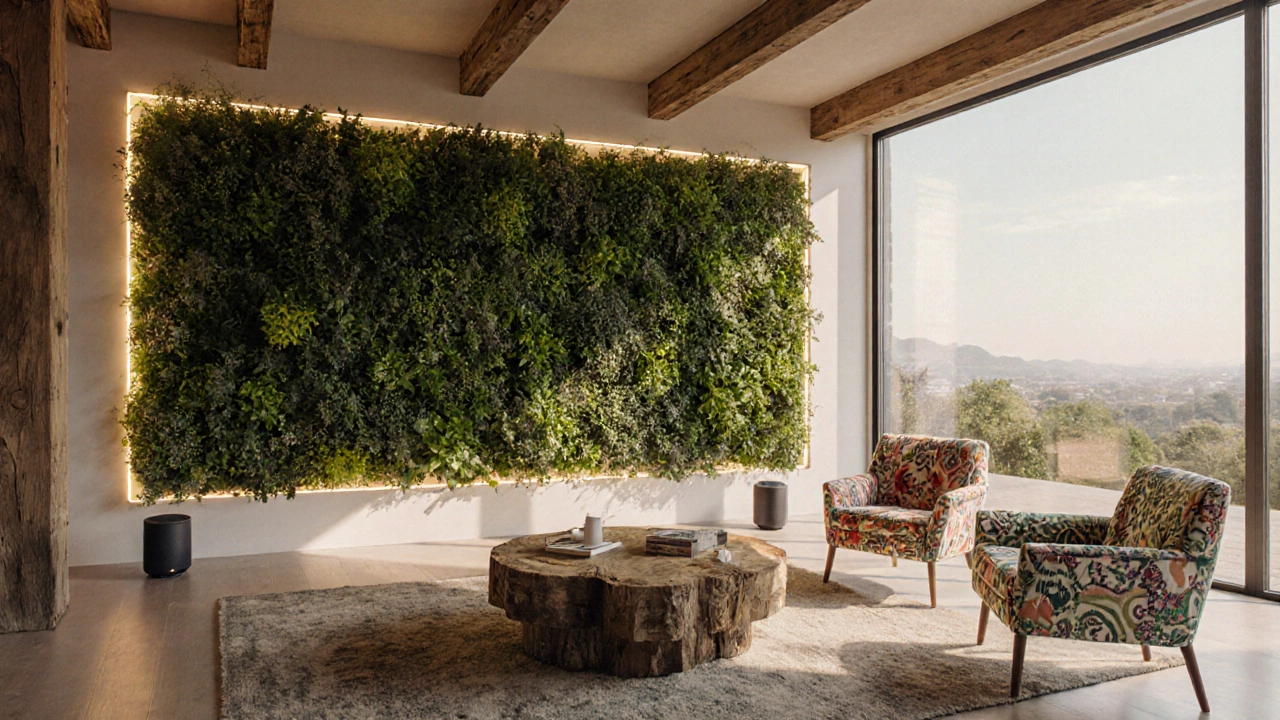
Trends Shaping the Future of Interior Design
Design isn’t static. Here are three trends you’ll see more of in the next few years:
- Biophilic Design - bringing nature indoors with living walls, natural wood and daylight maximisation.
- Smart Home Integration - adding voice‑controlled lighting, climate and security systems.
- Circular Economy Materials - using reclaimed, recyclable or up‑cycled products to reduce waste.
Modern Sustainability guides material choices, energy use and the overall lifecycle impact of a space. Designers now act as consultants for greener living.
Common Misconceptions About Interior Designers
People often think designers are just “decorators” who pick paint colours. In reality, they act as project managers, engineers of flow, and brand storytellers. They also navigate building codes, negotiate with contractors, and keep a project on budget.
Frequently Asked Questions
What services does an interior designer typically provide?
Services range from initial consultation, space planning, colour and material selection, lighting design, furniture specification, to full‑service project management and final styling.
How much does hiring an interior designer cost?
Fees vary widely. Some work hourly ($75‑$250 per hour), others charge a fixed percentage of the project cost (10‑20%), or a flat fee per room. Small updates may start around $5,000, while full home remodels can exceed $100,000.
Do interior designers help with buying furniture?
Yes. They source pieces that fit the design concept, budget and durability needs, often leveraging trade discounts that aren’t available to the public.
Can an interior designer work on a rental property?
Absolutely. Designers can create stylish, temporary solutions that are easy to reverse at the end of a lease, helping renters maximize enjoyment without permanent changes.
What’s the difference between an interior designer and an interior decorator?
Designers are trained (often certified) to handle space planning, building codes, and project management, while decorators focus mainly on aesthetic finishes like paint, fabric and accessories.
